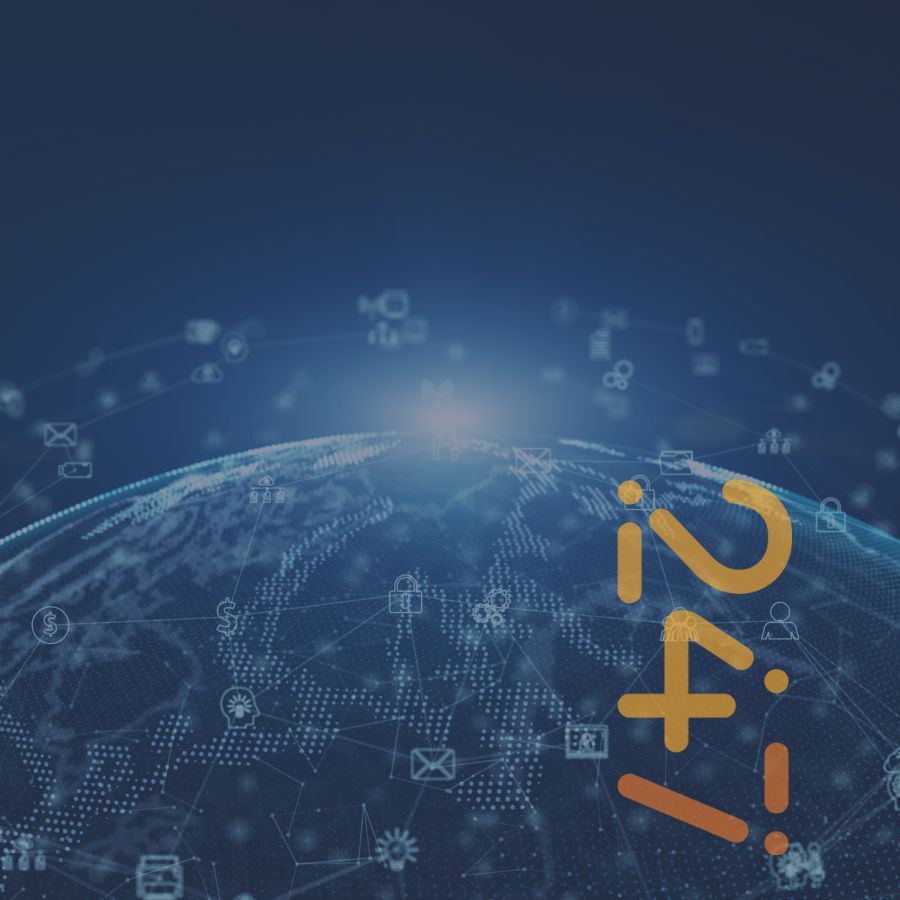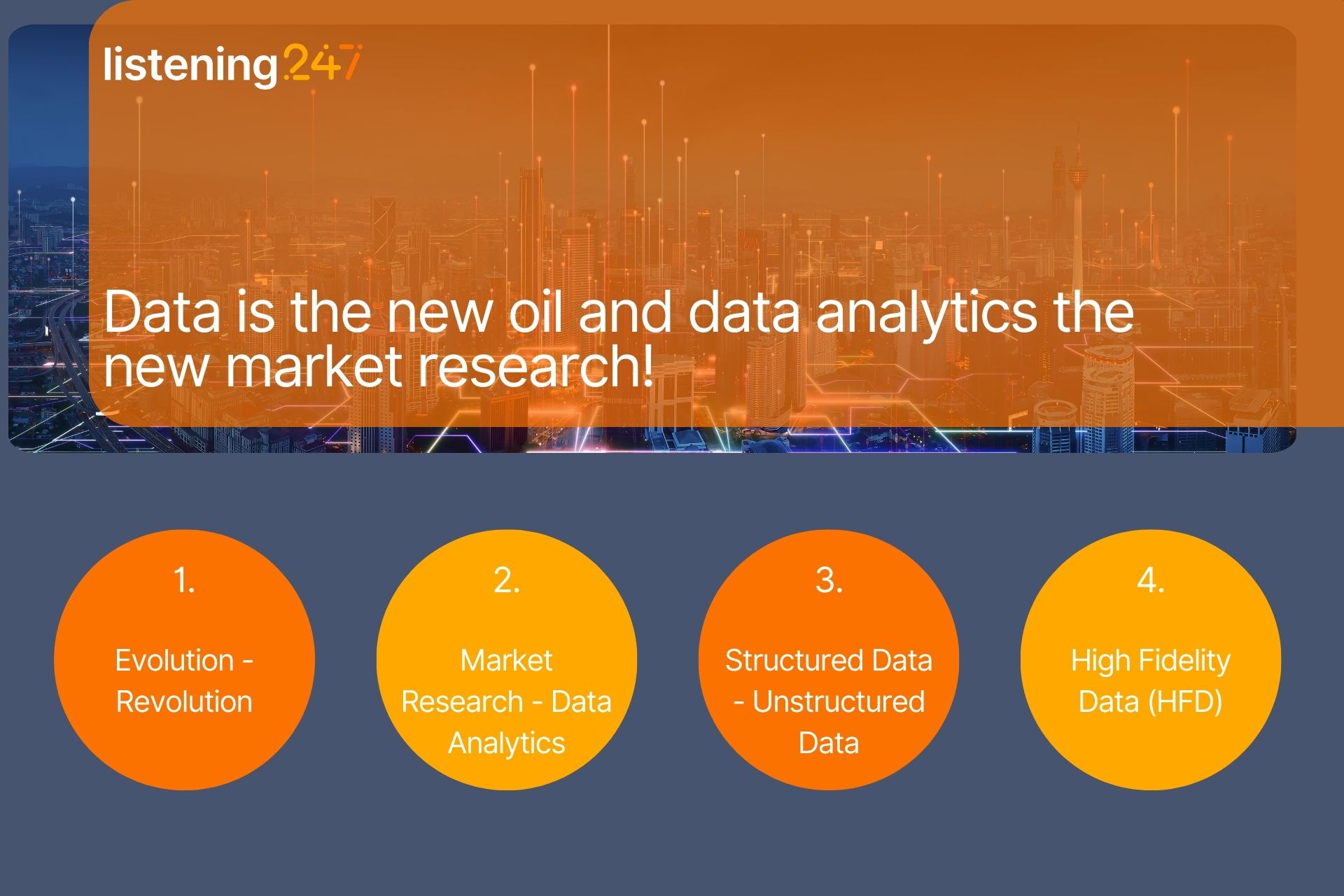
Blog Post
Data is the new oil and data analytics the new market research!

It is not the first time we’ve pondered the issue of whether market research needs a new name. In fact, as far back as 2016, we issued a blog post aptly named “Does the market research industry need a new name?”
This article is about a relatively simple idea but with a slightly convoluted explanation not so much about the name of our industry, more about what it really is becoming. Hopefully the conclusion will have enough clarity to make sense to most readers!
Not only living organisms like humans, animals and plants get to evolve, but so do ideas, industry verticals and disciplines; especially technology, which is practically a synonym of evolution in certain cases. The other interesting thing about technology is that not only it is a vertical itself, but as a business enabler it cuts across almost all other verticals. Hold this thought, it will all make sense a bit further down in this narrative.
So, 10 years ago we wanted to drive the evolution of market research. Hold this thought too.
Evolution - Revolution
Have you ever come across this pair of rhyming words in presentations:
“Evolution - Revolution”?
The presenters who use the pair (including Harvard Business School Profs.) usually want to differentiate between gradual - maybe linear - change/improvement, compared to radical/exponential change.
What about the sentence that has almost become a cliche in tech innovation circles:
“The pace of change will never be this slow again?”
Cliche or not, listening247 needs to change its tagline as a result;Could the logo tagline change from Market Research Evolved to …Market Research Revolted (from revolution not from disgust :))
”Data Analytics” - powered by AI of course!
Market Research - Data Analytics
During the last 10 years, the pace of change was such that ESOMAR (the biggest global association of market research) is now including the revenues of companies like SAS, Adobe, SAP, and Salesforce in its newly defined market research market.
In the context of social intelligence, listening247 has always supported the notion that harvesting online posts is a commodity. Anybody with some basic programming skills and access to the cloud can harvest posts from Twitter or other public sites. The same applies to data collection in traditional market research which is essentially asking other people questions.
If market research = data collection + data processing + data analysis + reporting then it follows that market research - data collection = data analytics …pretty much.
If you put all the above points together, you will agree that market research started going through a revolution. This revolution is mainly driven by the progress in machine learning and cloud computing. The new face and possibly new name of listening247 is as the equation above shows Data Analytics. This is the beginning of a consolidation tsunami in the data analytics field marked by landmark acquisitions such as SAP acquiring Qualtrics at a 20 times revenue multiple.
listening247 had to go through a process that took 6 years of focused R&D, researching and ultimately developing tech that was good enough to annotate unstructured data accurately, in any language (and images for that matter), in order to analyse it,understand it and extract value from it - usually in the form of actionable insights.
It turns out the technology that was developed during all these years is not only applicable to market research but it can also be used to:
- - discover people who express purchase intend (sales lead generation)
- - predict the direction of a stock the next day (alternative data for funds)
- - find and engage with nano/micro influencers and create brand ambassador communities (influencer marketing)
- - enhance customer experience measurement tools with the feedback customers provide on social media (CX Measurement)
- - identify and score cyber threats (cyber security)
All these are adjacent markets to market research and they are another strong reason to call what we developed and what we now do …you guessed it…. “Data Analytics”.
Structured Data - Unstructured Data
We have mentioned this statistic in previous articles: 80-90% of documented human knowledge of all times is in the form of unstructured data; this definition includes text and audio in multiple languages, images and video clips/feeds. This only leaves around 10% of documented human knowledge being numbers in tables; what we would call structured data.
Integrating unstructured data with all the traditional data sources some of which businesses probably already own, has to be one of the biggest game changers of this new decade. A couple of years back the CMO of DIAGEO (on a call about a social analytics report that we were presenting) referred to this idea as the “holy grail”. Case in point WeLab a new virtual bank in Hong Kong, that raised hundreds of millions of dollars in funding, bases its entire risk management strategy in analysing mobile unstructured data.
This data integration can only work if we can ensure we are combining and synthesizing
High Fidelity Data (HFD)
Data analytics seems to be a mega industry. According to Statista, the global big data and business analytics market was valued at 169 billion U.S. dollars in 2018 and is expected to grow to 274 billion U.S. dollars in 2022. As of November 2018, 45% of professionals in the market research industry reportedly used big data analytics as a research method.
Market researchers have to move on to the next chapter, we need to build on what we brought to the table and combine the three data sources that matter most:
- 1. Transactional & behavioural data
- 2. Solicited customer opinion
- 3. Unsolicited customer opinion
This is not just market research (customer opinion), it is certainly not just business intelligence (BI - historically analysing transactional data), it is what we now will simply call: “Data Analytics”
I know I’m repeating myself but I can’t say this often enough: in order for the data integration to not turn out to be useless - or even harmful when it comes to making business decisions, the data has to be as accurate as it can be. This is a simple concept, anyone who has experienced it before wants to avoid it, and it is called GIGO (Garbage in Garbage out).
If this quote is true: “The world’s most valuable resource is no longer oil, but data” The Economist Report in 2017 - and I believe it is - then during this next decade the balance of power might change dramatically on our little planet.
With our new company name and tagline: listening247 - High Fidelity Data the future can be nothing but bright and promising!